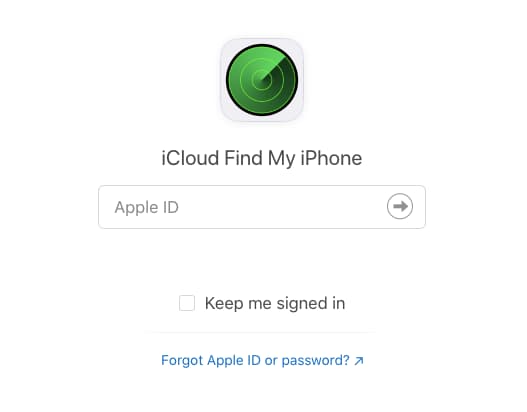In the bustling world of digital documents, selecting the right file type for your specific tasks can significantly impact your workflow efficiency. From sharing important reports to collaborating on creative projects, understanding the nuances of various document file formats is key to streamlining your processes and ensuring seamless communication.
Let’s delve into the diverse landscape of document file types and uncover the best practices for choosing the most suitable format for different tasks.

Understanding the Basics: Different Document File Formats Explained
Before diving into the nitty-gritty of file selection, let’s take a moment to familiarise ourselves with the basics. Document file formats come in various shapes and sizes, each catering to different needs and requirements.
From the ubiquitous PDF to the classic DOCX, and the simple yet effective TXT, there’s a plethora of options available to cater to your specific workflow demands.
The Power of Portable Document Format (PDF)
Ah, the beloved PDF – the go-to format for sharing documents while retaining their original formatting. Its universality and compatibility across different devices and operating systems make it an indispensable tool for professionals and individuals alike.
Whether it’s contracts, presentations, or brochures, PDFs ensure that your documents appear exactly as intended, regardless of the software or hardware used to open them.
Harnessing the Versatility of DOCX Files
When it comes to word processing and collaborative editing, the DOCX format takes centre stage. With its robust features for creating and formatting text-rich documents, it has become the standard choice for various office applications.
Its compatibility with popular word processing software allows for seamless sharing and editing, making it a top contender for businesses aiming to optimize their document workflow.
Simplifying with Plain Text (TXT) Files
For those who value simplicity and straightforwardness, the humble TXT file is a gem. Stripped of all formatting and frills, TXT files are perfect for storing unformatted text and coding purposes.
Their lightweight nature and compatibility with virtually any text editor or operating system make them an ideal choice for quick note-taking, coding projects, or storing raw textual data without any hassle.
Diving into Data Management with XLSX Files
When it comes to managing data and performing complex calculations, the XLSX format reigns supreme. Widely used for creating spreadsheets, it enables users to organise, analyse, and manipulate data efficiently.
Its advanced features for data representation and analysis make it an indispensable tool for businesses, researchers, and data enthusiasts aiming to streamline their data management processes.
Embracing Multimedia Richness with HTML and Multimedia Formats
In our multimedia-driven world, HTML and various multimedia file formats, such as JPEG, PNG, MP3, and MP4, play a pivotal role in creating visually engaging and interactive content.
HTML, the language of the web, allows for the seamless integration of multimedia elements, while image and video formats add depth and vibrancy to digital presentations, websites, and creative projects.
Securing Information with Encrypted Formats
In an age where data security is paramount, encrypted formats such as ZIP, RAR, and encrypted PDFs have emerged as guardians of sensitive information.
They offer robust encryption and password protection, ensuring that your confidential data remains secure during storage and transmission. Implementing encrypted formats is essential for businesses and individuals dealing with sensitive data, providing an extra layer of protection against unauthorised access and data breaches.
Choosing the Right Format for Your Workflow
Now that we’ve explored the diverse landscape of document file formats, it’s time to consider the best practices for selecting the right format for your specific tasks. Assess the nature of your work, the intended audience, and the required functionalities to determine the most suitable format that aligns with your workflow goals.
Whether you’re sharing a visually rich presentation, collaborating on a spreadsheet, or securing sensitive information, choosing the appropriate file type ensures smooth communication and efficient document management.
Integrating File Conversion Tools for Enhanced Flexibility
To further optimise your workflow, consider leveraging file conversion tools that facilitate seamless transitions between different file formats.
These tools – such as the free PDF to Word converter from Smallpdf – enable you to convert documents effortlessly, ensuring compatibility and accessibility across various platforms and devices.
By embracing file conversion capabilities, you can enhance the flexibility of your workflow and ensure that your documents are readily accessible and compatible with your collaborators’ preferences.
Streamlining Collaboration with Cloud-Based Platforms
In our interconnected digital landscape, cloud-based platforms have revolutionized the way we collaborate and share documents.
Leveraging cloud storage and collaboration platforms not only facilitates real-time collaboration but also ensures secure and convenient access to your documents from anywhere, at any time. Embrace the power of cloud-based solutions to streamline your workflow, enhance team collaboration, and foster seamless communication across your organisation.
Enhancing Document Security with Regular Backups
Safeguarding your documents is paramount in the digital realm. Implement regular backup practices to ensure that your valuable data remains protected in the event of system failures or unforeseen data loss.
Embrace automated backup solutions and cloud-based storage options to create redundant copies of your critical documents, providing an additional layer of security and peace of mind. Also Read – 11 Things Every Small Warehouse Needs.
Adapting to Evolving Standards: The Role of Open Document Formats
With the growing emphasis on open standards and interoperability, open document formats have gained prominence in the digital landscape. Formats like ODT (OpenDocument Text) and ODS (OpenDocument Spreadsheet) prioritise accessibility and compatibility, allowing users to access and edit documents across different software applications seamlessly.
Embracing open document formats fosters a collaborative environment and ensures that your documents remain accessible and editable without constraints posed by proprietary software limitations.
As the industry continues to evolve, integrating open document formats into your workflow not only future-proofs your document management practices but also fosters inclusivity and accessibility across diverse digital platforms and applications.
Final Thoughts: Embrace the Right Format for Optimised Productivity
In the dynamic landscape of digital document management, the choice of the right file format significantly impacts your workflow efficiency and communication efficacy.
By understanding the unique features and functionalities of various document file formats and integrating best practices for document management, you can optimize your workflow, streamline collaboration, and ensure the security and accessibility of your valuable documents.
Embrace the power of the right file format and propel your productivity to new heights in the digital era.



